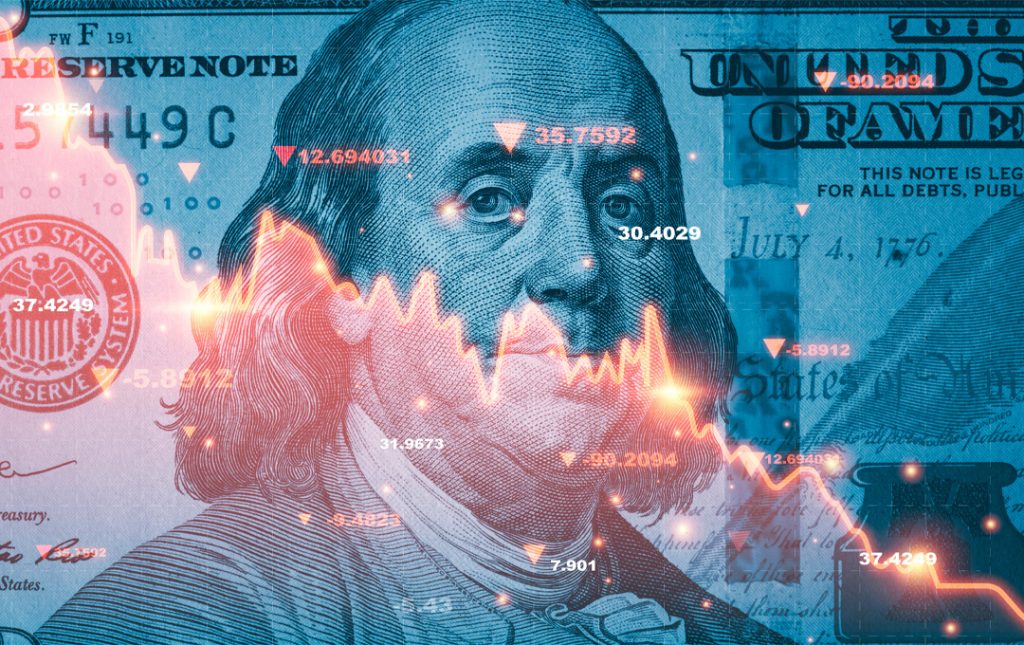The U.S. dollar remained close to its lowest levels in over a year on Wednesday, with currency markets focused on the potential size of an anticipated interest rate cut by the Federal Reserve next month. Meanwhile, other major currencies and cryptocurrencies displayed mixed performance amid cautious market sentiment.
Dollar Struggles as Fed Rate Cuts Loom
The U.S. dollar index (DXY), which measures the greenback’s strength against a basket of six major currencies, was slightly up by 0.2%, hovering at 100.78. This is just above the 13-month low of 100.51 reached earlier in the week. Despite the slight uptick, the dollar has fallen 3.4% for the month, setting it on track for its most significant monthly decline since November 2022.
Market participants are unanimous in their expectations that the Federal Reserve will begin cutting interest rates next month. The debate has now shifted to whether the cut will be a standard 25 basis points or a more substantial 50 basis points. The probability of a larger, 50-basis point cut has risen to 36%, up from 29% a week ago, according to the CME Group’s FedWatch Tool.
Given that markets have been pricing in these rate cuts for several weeks, the downward momentum for the dollar appears to be stabilizing, with solid support around the 100.18/30 level.
Mixed Performance in Major Currencies
Sterling (GBP/USD):
The British pound slightly declined by 0.14% to $1.3243 after reaching a high of $1.3269 on Tuesday, its highest level since March 2022. Despite this minor setback, sterling remains robust, supported by expectations that the Bank of England may maintain its tightening stance.
Euro (EUR/USD):
The euro slipped 0.24% to $1.1156 but remained close to the 13-month peak it touched earlier in the week. The euro’s strength reflects the eurozone’s relative economic stability and the European Central Bank’s cautious approach to rate cuts.
Yen (USD/JPY):
The Japanese yen edged lower by 0.23% to 144.33 per dollar, further distancing itself from the three-week high of 143.45 achieved on Monday. The yen’s recent strength was driven by safe-haven demand, but with the dollar stabilizing, the yen has given up some of its gains.
Australian Dollar (AUD/USD):
The Australian dollar rose to an eight-month high earlier in the day but was last flat at $0.6793. Despite data showing that domestic inflation slowed to a four-month low in July, the progress was less than expected, which disappointed markets. The Reserve Bank of Australia is unlikely to change its stance at its September meeting, potentially providing short-term support for the AUD, especially with the U.S. dollar’s cyclical weakness.
New Zealand Dollar (NZD/USD):
The New Zealand dollar dipped slightly by 0.1% to $0.6246, reflecting general caution in the currency markets as traders awaited further economic data from the U.S.
Bitcoin Takes a Hit
Cryptocurrency bitcoin (BTCUSD) was in the spotlight in Asia, experiencing a significant drop of over 4%, trading at $59,329 after briefly falling over 6% earlier in the session. The fall below the critical support level of $60,000 has raised concerns among investors about further declines in the near term.
Looking Ahead: Key Economic Data
The focus for the rest of the week will be on the preliminary estimate for U.S. gross domestic product (GDP) for the second quarter, as well as the core personal consumption expenditures (PCE) index, which is the Fed’s preferred inflation measure. However, with attention gradually shifting from inflation to the overall strength of the economy, the importance of this week’s PCE data is debatable.
A strong upside surprise in the PCE data could challenge the current expectations of multiple Fed rate cuts. Otherwise, the markets may continue to anticipate easing, which would likely keep the dollar under pressure.
Conclusion
As the dollar hovers near its lowest levels in over a year, the global currency markets remain on edge, closely watching for any clues from the Federal Reserve regarding the size and timing of the next rate cut. While the dollar shows signs of stabilization, the upcoming economic data releases will play a crucial role in determining the currency’s next move. Meanwhile, other major currencies and cryptocurrencies are experiencing varying levels of volatility, reflecting the broader uncertainty in the financial markets.
Stay tuned for further updates as we continue to monitor these developments and their implications for the global economy.




